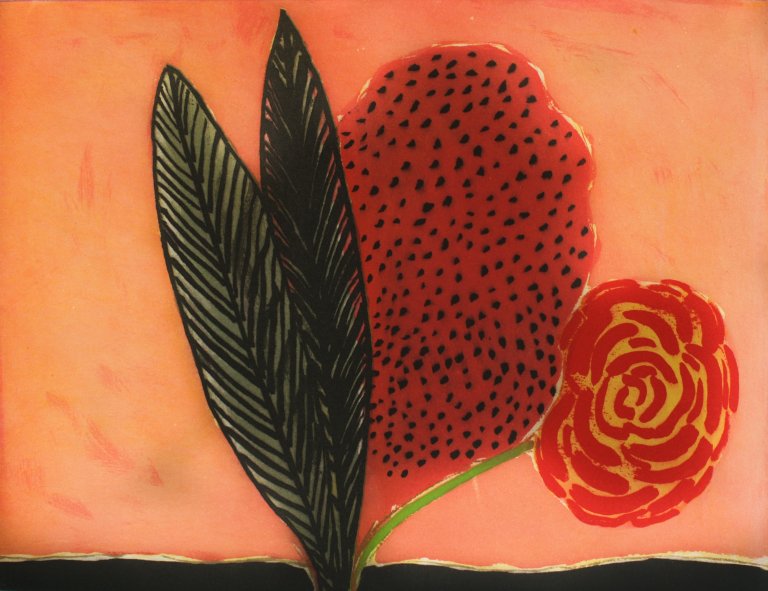
WILLIAM CROZIER (1930-2011)
20th March - 17 April 2021
The Art Stable is delighted to present an exhibition of prints by William Crozier (1930 – 2011). Crozier’s prints, though less well known than his paintings, share the same characteristics: vibrant colour, virtuoso drawing and a passionate engagement with the landscape and still-life, subjects Crozier explored throughout his long career.
Crozier approached printmaking as a parallel activity to painting, relishing the freedom of the print medium and his collaboration with master-printers. The prints in this exhibition were created between 1993 and 2010 at the Graphic Studio, Dublin and with the Berardinelli family of printers in Verona, each studio prompting distinctive approaches to image-making. Crozier explained the collective effort of making a print as akin to making jazz. He said “I see it as kind of an ensemble: one guy doesn’t know what the rest are going to do. With the colours of the band, a good musician is listening to the other person and he’ll wait and come in on the right note, and then someone else will come in.”
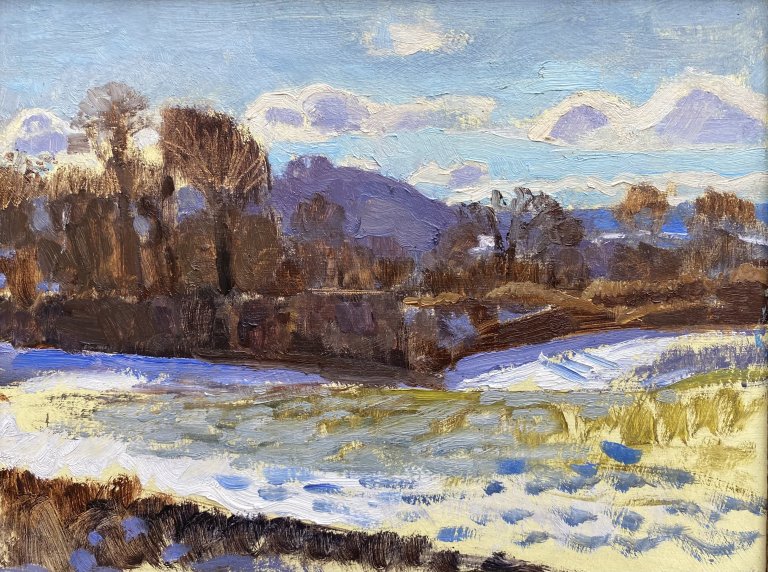
Christopher Riisager
6 February - 6 March 2021
Since graduating from Goldsmiths with a BA in Fine Art in 1984, Christopher Riisager has through a consistent and diligent working practice built a profound knowledge of the landscapes he loves in Wiltshire and Dorset. Constantly striving for new subjects and challenges through which to extend his painting, he travels the countryside looking for compositions that reveal something new in even the most familiar places to himself and, ultimately, the viewers of his work.
In his studio, set in the rural farmlands of the Dorset-Wiltshire border, Christopher surrounds himself with his experiments in painting, sculpture, collage and printing. All reveal a deep curiosity about and dedication to artistic explorations of form, figure, colour and texture extending through separate disciplines to inform each other. Closer inspection of the accumulated collection of older and more recent paintings reveals the solid influence of the tonal painting of the nineteenth century; the French classicism of Corot and the English stylishness of William Nicholson.
Often working en plein air, the race against the changing light and the weather enforces focus and speed. Christopher’s tacit knowledge of colour and light, built through years of experience and observation, result in paintings that invoke the beauty of a scene at a distance, but when drawn in to a closer view unexpected and beguiling motifs appear, capturing the ancient attraction of the Wessex landscape.
His studies of Wessex are supplemented with paintings of southern France, which provide an opportunity to work in a different scale and tone. The open vistas of south-east France studded with crumbling buildings and collapsed bridges, offer a contrast to the tree-enclosed cattle droves and sheltered, sheep-studded valleys of England.
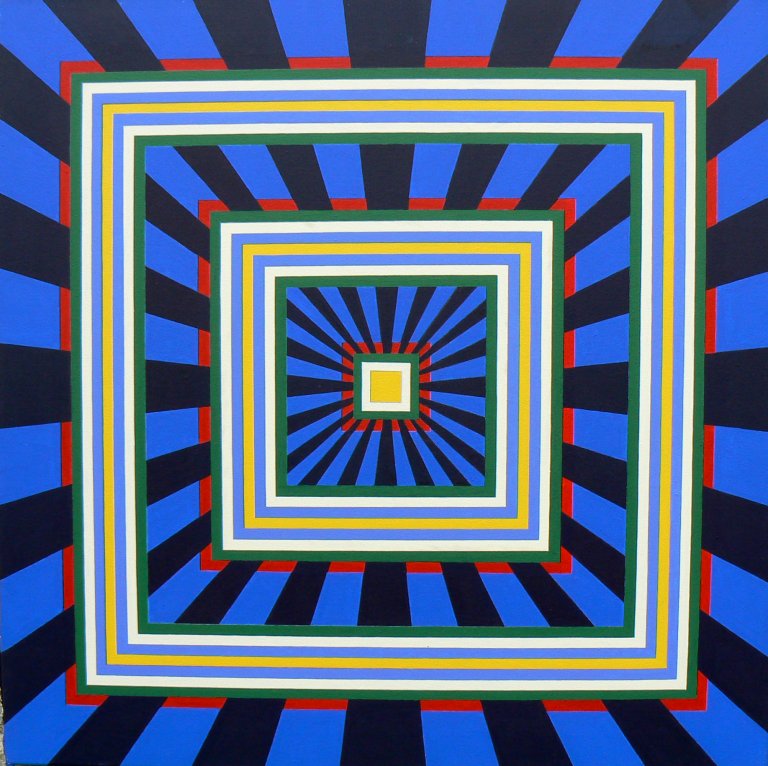
Brian Rice
6 February - 6 March
Few artists from the 1960’s and 1970’s were more prominent than Brian Rice. Critically acclaimed, his work was everywhere - in galleries, in colour supplements and magazines: The Sunday Times, Observer, Nova, Tatler, House Garden were just some of the magazines featuring his work at the time. Brian’s work would also appear in room interiors advertising Whiskey, furniture, carpets etc. When in 1968 the ‘modern’ room series for the Geffrye Museum was designed, the picture on the Wall was a Rice. Similarly the 1970 Idea Home Exhibition featured work by Rice. It was also included in films such as ‘The Candidate’ and ‘The Untouchables’. Alongside contemporary artists such as Bridget Riley, Peter Sedgley, Derek Boshier and others Rice’s bold coloured geometric abstracts reflected the period. In 1978, after 16 years of living in London and being at the centre of the British Art World, Brian bought a 50 acre farm in Dorset and while continuing to teach devoted much of the following decade to restoring the C16th farmhouse and farming sheep. In the 1980’s Brian Rice started to paint and exhibit again, his work having taken on a softer edge. Taking inspiration from the deep marks made in the landscape, the work is more textural and rhythmic. Rice began exhibiting in 1961 and has had 35 solo exhibitions and around 200 group exhibitions around the world. His work is held in over 60 public and corporate collections worldwide, including the Tate Gallery, V&A Museum, the Geffrye Museum, the Government Art Collection, the British Council, Plymouth City Art Gallery, Southampton City Art Gallery, Exeter Museum, and in several USA institutions. Brian Rice was born in 1936 and studied at Yeovil School of Art and Goldsmiths College, London. In the 1960s and 70s he taught at numerous art colleges in and around London, and until 2001, at Brighton College of Art (now the University of Brighton).
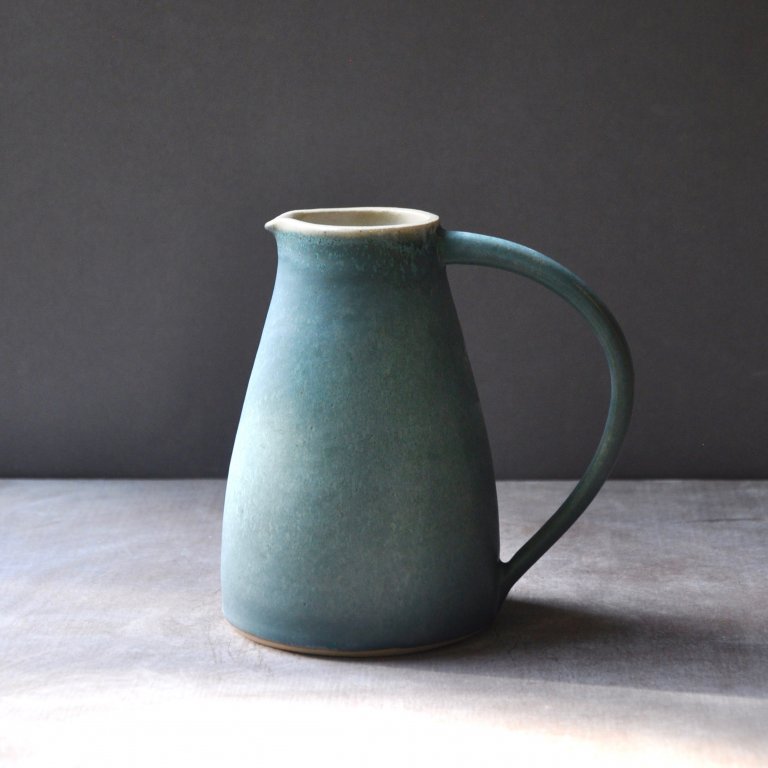
CHRISTMAS EXHIBITION
STILL LIFE IN CERAMICS WITH PAINTINGS AND PRINTS BY GALLERY ARTISTS
5 - 19 December 2020
Following on from our successful summer exhibition of Contemplation – exploration of ceramics and furniture, we present our autumn ceramics exhibition on the theme of Still Life. The opening of this show has coincided with yet another period where we are spending the majority of our time in a domestic setting. Surrounded by everyday objects, we felt it was time to explore Still Life in ceramics. Although this genre came into prominence in Dutch paintings of the 16th century, the roots of depicting inanimate objects in art can be traced back to the tombs of the Egyptians. The ancient Greeks and Romans also used this form of artistic expression to adorn their buildings with mosaics and frescos.
The three ceramicists taking part in this exhibition, Lucy Burley, Jo Marland and Joanna Oliver are all inspired by Still Life paintings and have incorporated the essence of still life into their own ceramic practice. Functional jugs, plates and bowls can all be used for eating and drinking. When not in use, these humble objects can serve as a reminder of the beauty of the everyday and ordinary, maybe even as a prop for setting the scene for ones’ own Still Life experiments.
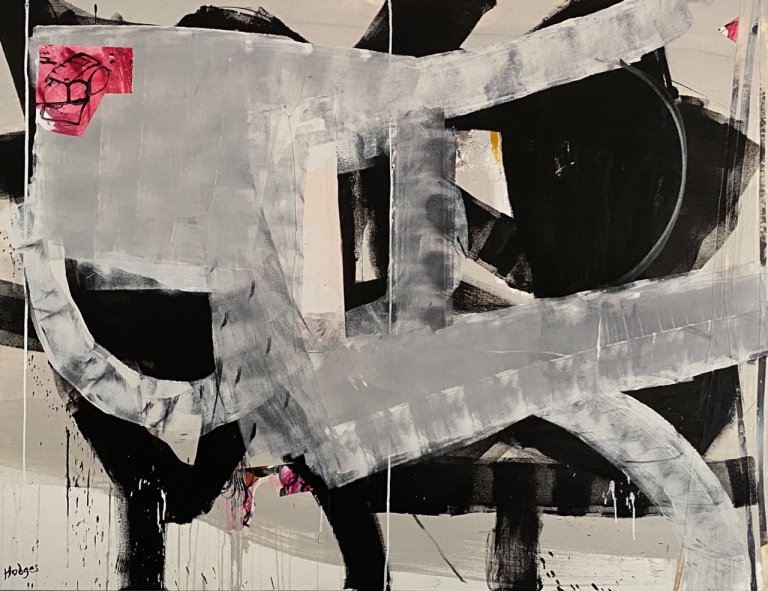
FELICE HODGES
New Work
17 October - 7 November 2020
“Trying to describe Felice Hodges wonderful paintings with accuracy can be difficult because - like the truest art - they transcend the harsh rigidities and conformities of language. She makes paintings that may first appear wholly abstract and gestural in expression but, on continued looking, are generally rooted in a specific place or moment which their titles and forms gradually reveal. They hover between abstraction and some mysterious, transformed poetic reality that the viewer becomes immediately caught up in and a part of, and the viewer becomes part of an interaction or dialogue with the picture itself. The evocative mood and atmosphere of these paintings is often suggested by subtle, ravishing harmonies of colour. Tones and colours are laid next to, or over each other, to create highly original and unexpected chromatic combinations which are also intensely beautiful. They have a direct effect on the viewers’ emotions. Felice trained as a musician and continues her musical interests and in this her work is reminiscent of the tone poems of Claude Debussy and Maurice Ravel. Such music is ethereal and free flowing, intangible, yet contained within a highly effective structure. Felice’s paintings have a similar enigmatic character. The surface of these canvases is highly, richly complex, also like a musical composition.......Felice demonstrates the continued relevance and resonance of such an expressive approach to painting and perception, and it is one that enriches all who see it”.
Robert Upstone, former head of Modern British art, Tate Britain.
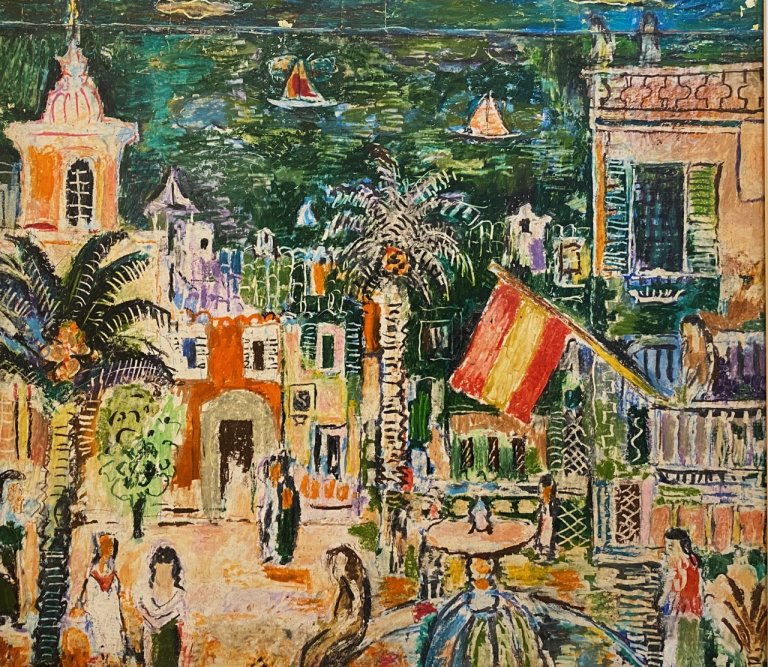
Robert & Dorothy Bradbury
Painting the Warmth of the Sun
5 September - 3 October 2020
The Art Stable is delighted to be presenting a second exhibition of work by Robert and Dorothy Bradbury, the last one being in 2012, which was the first time that they had shown in the UK - paintings that are full of energy, colour, and the warmth of the sun. We were introduced to their work by Mario Reading, who has sadly since passed away, but his enthusiasm for their work and his long and close relationship with Robert feels like a strong element of this exhibition too, and some of the paintings in this show come from his own collection, which was built up over many years visiting Dorothy and Robert in Deia. And it seems fitting that we reproduce the piece that Mario wrote for the last exhibition in 2012, which describes so well Dorothy and Robert’s life in Mallorca.
The Bradburys met as students in 1934 at the Fine Arts School of San Francisco. Dorothy came from an upper crust Californian family, while Bob famously bummed rides on the railways during the Great Depression. They arrived in Europe in 1949 just a few months after the birth of their only child, Suzanne. This voyage marked the beginnings of a love affair with Europe that culminated in the Bradburys moving permanently to Deià, Mallorca, in 1955. Deià, with its rugged beauty, the extraordinary layout of its houses and terraces, and its magnificent pine-clad coastline, was to prove the perfect environment for the Bradbury’s vision.
Both Bob and Dorothy lived for their art. Dorothy died at the tragically early age of 67 in 1980, but Bob continued to paint in the open air until just before his death in 2011, aged 98. In today’s embattled world, it is a delight to encounter the work of two artists who set out to celebrate its beauty in an unrestrained and unselfconscious way. Drawing their inspirations from Van Gogh, Gauguin, Matisse, and Mallorcan predecessors such as Fuster Valiente, both artists succeeded in transcending their early influences, with Dorothy emphasizing the relationship between the feminine principle and the geography of Deià using an extraordinary technique of her own devising that straddles the border between printmaking and hand coloured mono-prints, while Bob moved towards a synthesis between the purity of Islamic art and Cezanne’s concepts of natural design.
To the end of his life Bob continued to live in the same conditions of utmost simplicity he had shared with Dorothy, in which he viewed the making of his art as an object lesson in humility. Their joint legacy - what one might reasonably call the fruits of their prelapsarian vision - still abides. Deià, though changed, largely retains the essence they found in it - an essence that somehow, miraculously, survived the Fall.
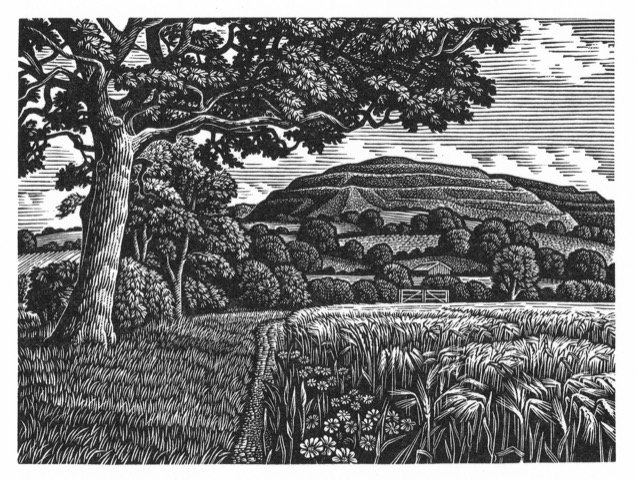
Howard Phipps
HOWARD PHIPPS
5 September - 3 October 2020
Howard has lived in the Ebble Valley near Salisbury since the mid 1990’s and much of his art is based on his observations of the downland landscape of Wiltshire and Dorset. Timeless places and striking hill forms draw his eye; and for this his third exhibition at The Art Stable he has revisited the hill forts of Eggardon and Hambledon Hill, and has also developed work based on the ramparts at Bulbarrow Hill in Dorset. He likes to observe these ancient places when the sun is low, and the light reveals the underlying sculpture of the land.
Likewise he uses light to effect on the forms of trees, another theme which frequently concerns him. As a wood engraver he might be be described as an artist who draws with light, since each incision made with his tools on the pre-blackened Boxwood gradually reveals the design through lines and textures. It is a reversal of the pencil drawing or watercolour study where the tones are built up on a white paper. When a drawing is transposed to the woodblock medium the light and tonal impact of the image is frequently intensified within only a few square inchesHoward will be exhibiting a number of his watercolours and preliminary drawings in this exhibition alongside the wood engravings, such as that of an oak on the water meadows near his studio and the romantically situated Wardour Castle. Howard has also made further work based upon the Dorset Coastline with recent engravings of subjects at Portland Bill and Chapman’s Pool.
Howard Phipps has established himself as one of England’s foremost wood engravers. His work has been has been acquired by several National and International institutions including The British Museum who hold thirteen works, and most recently the Yale Centre for British Art in the USA, and the Heilongjiang Museum of Art in China. As a painter as well as printmaker, his work has been exhibited in a number of galleries across the Country, including solo shows at The Victoria Art Gallery, Bath and the Dorset County Museum. He has been a frequent exhibitor at Royal Academy Summer Exhibitions since 1985, and is a Royal West of England Academician and member of the Society of Wood engravers.
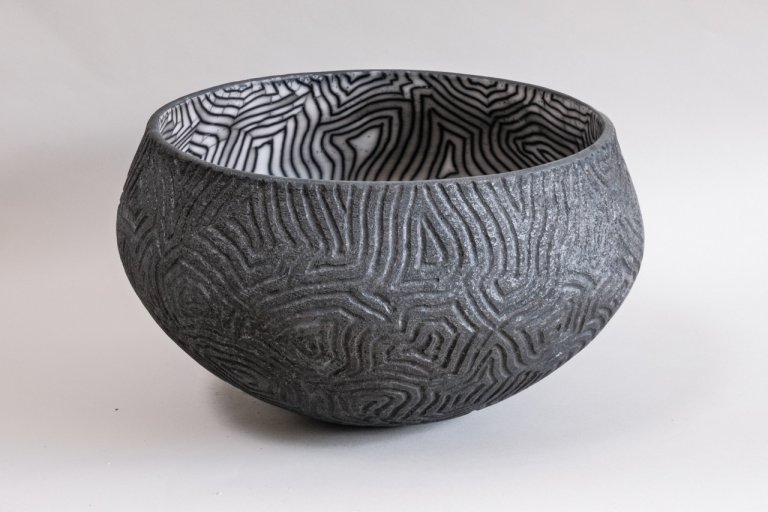
Contemplation
An exploration of Contemporary Ceramics, Furniture and C20th Prints
Ceramics by Adam Buick, Nel Faulkner, Jonathan Garratt, Ali Herbert, Nigel Lambert, David Roberts, Jason Wason and furniture by Matthew Burt Studio
Prints by Edward Ardizzone, Elizabeth Blackadder, Bernard Cathelin, Gabriel Couderc, Edwin la Dell, Robyn Denny, Mary Fedden, Josef Herman, Matthew Hilton, David Hockney, Albert Irwin, David Jones, Felix Kelly, R.B.Kitaj, Robert Medley, Hughie O'Donoghue, Ana Maria Pacheco, John Piper, Constance Mary Pott, Patrick Proctor, Ceri Richards, Ludwig Sander, Peter Sedgley, Richard Smith, Italo Valenti and Georges Valmer
1 - 29 August 2020
Illustrated left: David Roberts, Swirl
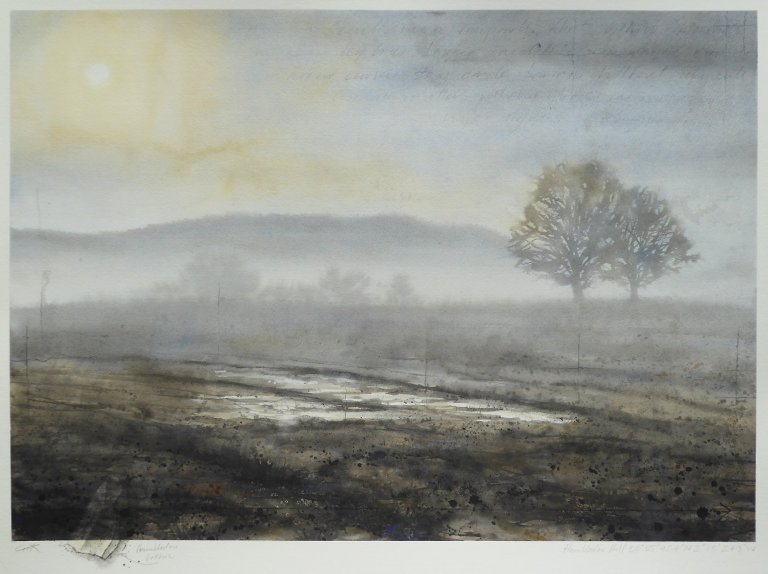
Gary Cook
20 June - 18 July 2020
The works in Gary Cook's upcoming High Ground exhibition expertly capture the soft Dorset light and its magical effects on the slopes of Hambledon Hill. He weaves an ecological theme into this haunting collection, recording the names of the hill's precious fauna within his ink, watercolour and charcoal paintings, while also incorporating a timeline of our powerful connection to the site. "The hill is intriguing, from the first flint and antler-dug earthwork markings 5,700 years ago, a millennium before Stonehenge, to the present day. I've been including sketches of found lithics and timelines in the watercolours. For example the mind-blowing thought that when the first mounds were built here the world population was just 7m. There are now 7,710m of us. Yet somehow the hill still feels remote and potent, and you can easily understand why our ancestors were drawn to this magical spot."
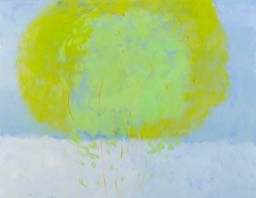
Sally McLaren
28 March - 25 April 2020
Sally McLaren is a modernist in the nature of her active involvement and passive reception of the given world: not so much describing it as reporting and recording from within it. She is also modernist in another crucial way, which follows from the first. Her attention is not solely fixed on the actualities of nature; it is preoccupied by the reality of the print or the drawing or the painting itself. A work is not a picture of the world so much as an object in the world: an object that, like the music of which Stravinsky spoke, is the outcome of a conscious human act, an object that will bring both sensual and intellectual pleasure; a self sufficient object that will 'please us, divert us, delight us’ as much as the natural objects and energies that inspired its creation.
Mel Gooding